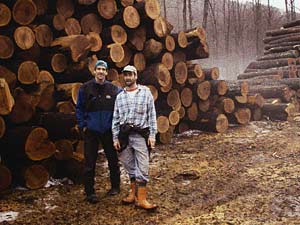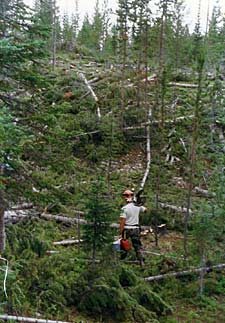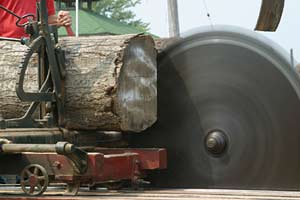Environmentally Responsible and Sustainable Land Management
Serving Southern New York State and Western Connecticut.
Forestry
Cartography and inventory
Mapping and inventory are important tools in the land management process.
Accurate maps of a property are important when considering valuation, trespass, rights of way, other legal concerns and management compliance issues.
Inventory of the property is paramount when dealing with valuation, sustainability, protecting specific ecosystems, land conservation and forest management.
A good inventory combined with Geographic Information System software, allows LPM to represent the property in a spatial and tabular format. These GIS data bases can be queried by a variety of user specified parameters, giving the owner more information to make sound management decisions.
With years of experience in mapping and inventory, LPM can suggest mapping and inventory configurations to address individual client and property needs. The ability of LPM to tailor these mapping and inventory designs to an individual property; saves the client money on inventory field work while ensuring accurate and useable data.
Timber sale layout, valuation and log marketing

Timber resources produce long-term annuities and can provide for the financial sustainability of forestland properties. Further, forestland can provide alternative incomes from recreation leases, agri-forestry products and other uses.
LPM can plan and implement the timber sale as the means for the owner to achieve multiple management objectives. These objectives can be specific land improvements, road network and trail improvements, timber stand aesthetic improvements, wildlife habitat improvements and residual species composition and growth improvements. Further, proper sale layout promotes productive and safe conditions during harvest while minimizing residual harvest damage to ground, trees and property features.
Valuation and marketing of forest products from the timber sale is just as important. With out proper grading and valuation, the owner can not be assured of the volume and subsequent value of the products being sold in a timber sale. Marketing of logs from a timber sale in the northeast U. S. must be done with international consideration. Lower quality logs have a regional market and the higher quality material is marketed on an international basis. For the owner to maximize the value from his/her timber sale, both these markets need to be utilized and exploited. Specialized and niche markets for forest products need to be explored and considered.
With years of timber sale experience and timber contacts across the
nation and internationally, LPM has the ability to make your timber
sale profitable and productive.
In addition, LPM can help the owner realize an array of management objectives
using the timber harvest as the instrument.
Tree health and hazard abatement

Having large manicured trees on a property is a huge asset for any holding. Whether planted along roads, in fields or near buildings, trees add value to your property monetarily, aesthetically, historically and ecologically. Individual tree location, selection, cultivation and pruning are principal when planning for and maintaining these individual trees.
As trees grow older they produce more mast and the bark becomes thicker and deeply furrowed. This aging process increases the trees ability to support more life across all the food chain levels. With proper care, many indigenous trees in the northeast U. S. can live for two or three centuries, providing majesty and critical habitat requirements for the region and the holding.
Safety becomes an issue when dealing with old trees, making determination of pathogens and defect very important when addressing individual tree health. LPM can assess and categorize such defect and disease to provide more information when deciphering a course of action to address building and human safety, individual tree health and the effects on the other trees in the holding and in your region. LPM can recommend different strategies to preserve old trees while addressing safety concerns, tree health and tree aesthetics.
Sawmill selection, operation, lumber marketing and maintenance
Small private sawmills give the owner the ability to capture value, quality and historical wood products from their land. Currently, there are a number of mill manufacturers around the world with high quality specialized products designed for a variety of milling applications. LPM has produced lumber products from a number of productive portable and fixed sawmill configurations. This experience gives LPM the ability to help the client select a mill and configuration that best suits their needs.
Operation and sawing methodology is just as important as selection of your mill. Proper mill configuration and sawing technique must be established to produce safe, efficient and consistent results. Further, this planning reduces wear on equipment and the user allowing for a cost effective and enjoyable outcome. There are many different sawing methods utilized today. These methods often determine the final product and efficiency of your mill. LPM will outline these methods and products for the client ensuring maximum utilization and return on all lumber sawn.
High defect logs that do not meet market standards can yield high quality lumber for the owner, that other wise would have been lost. In addition, all log grading standards are based on a minimum eight foot length. As a result of this, a lot of quality short logs are not sawn at larger production mills and this material is wasted. The resulting four to eight foot lumber can be marketed to a variety of wood users, ranging from furniture manufactures to baseball bat producers. LPM has experience in finding and exploiting traditional and niche lumber markets in many regions of the U. S. A. This knowledge can be applied to help the client maximize return on all lumber sold and or utilized personally.
Maintenance of the saw mill is necessary to reduce operating costs and waste. A proper maintenance schedule increases the longevity and maintains accuracy of the equipment. Scheduled calibration and alignment of the mill promotes user safety by ensuring that none of the moving parts are under excessive tension, reducing user hazard while increasing sawing production and dimension accuracy.
Equipment selection, operation and maintenance

Forestry equipment available to the land owner and the professional is specialized and encompasses a variety of applications. LPM can advise the land owner on the purchase of forestry equipment ensuring a fit for his or her needs. Further, LPM can advise and train clients on the operation and maintenance of forestry equipment, reducing client hazard liability and equipment operational costs.